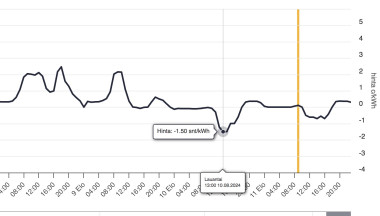Yesterday the price of electricity in Finland was negative 1.5 cents / kWh
It’s still not earning you money to spend electricity because you still have to pay the transfer fee which is around 6 cents / kWh but it’s pretty damn cheap nevertheless, mostly because of the excess in wind energy.
Last winter because of a mistake it dropped down to negative 50 cents / kWh for few hours, averaging negative 20 cents for the entire day. People were literally earning money by spending electricity. Some were running electric heaters outside in the middle of the winter.
